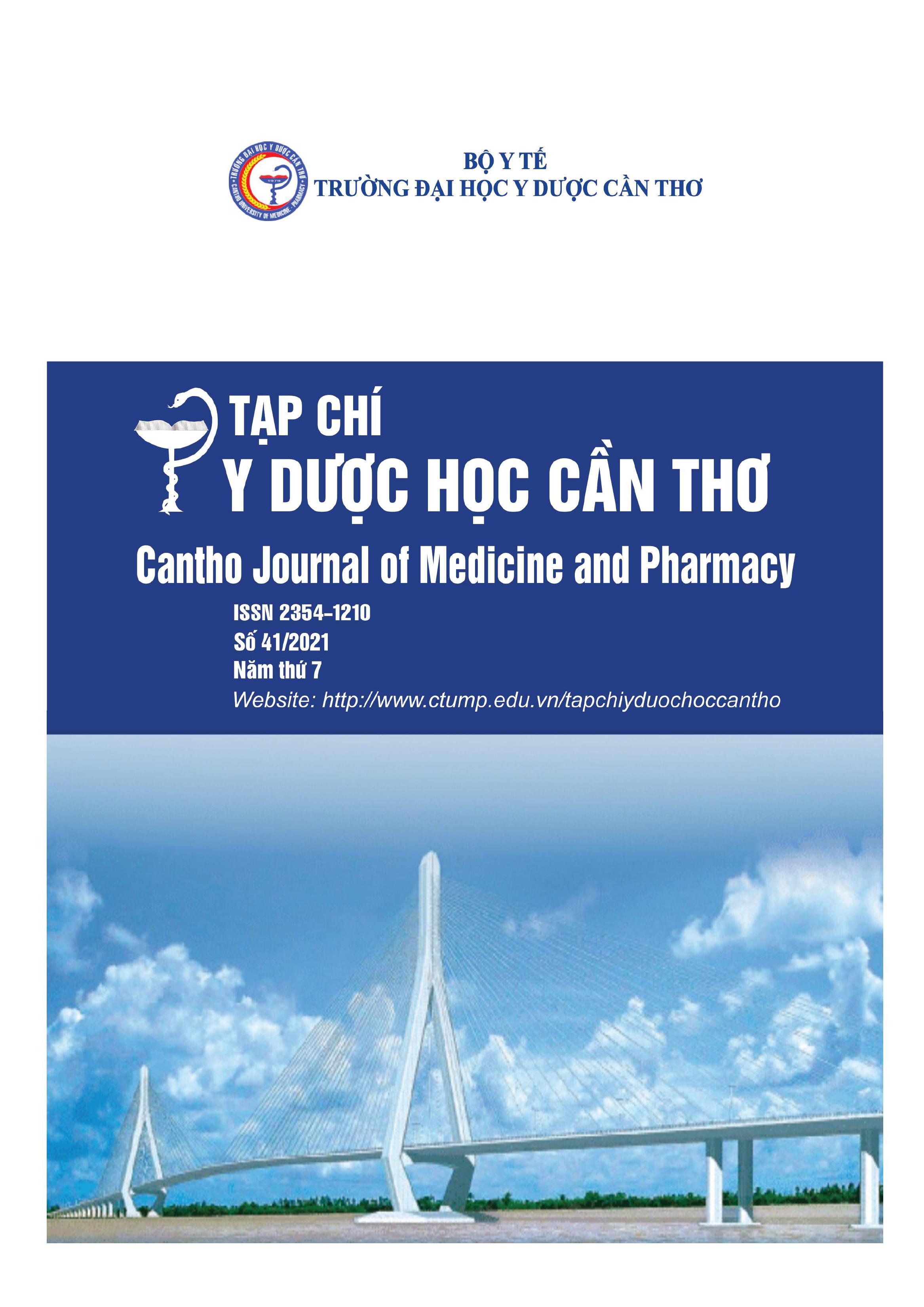PREVALENCE AND FACTORS RELATED TO DEPRESSION AFTER ACUTE ISCHEMIC STROKE AT CAN THO CENTRAL GENERAL HOSPITAL IN 2020 - 2021
Main Article Content
Abstract
Background: Post-stroke depression is a psychiatric condition with a high prevalence. It greatly affects the progression and recovery of patients after stroke and leaves the burden of disease. Objectives: To determine the prevalence and factors related to depression after acute ischemic stroke. Materials and methods: Patients with acute ischemic stroke are treated at the Internal Neurology Department and Internal Neurology Clinic of Can Tho Central General Hospital in 2020-2021. Cross-sectional descriptive study. The study has a sample size of 187 patients, using a convenient sampling method. Results: The rate of depression after acute ischemic stroke is 20.3%. Factors related to post-stroke depression: Female (p < 0.05); income ≤ 3 million (p < 0.05); stroke > 1 time (p < 0.05); cerebral hemorrhage (p < 0.001); having a stroke < 6 months (p < 0.001); diabetes mellitus (p < 0.01); dyslipidemia (p < 0.001). Conclusion: The rate of depression after acute ischemic stroke is 20.3%. Risk factors for depression after acute ischemic stroke: gender, income, number of strokes, cerebral hemorrhage, having stroke less than 6 months, diabetes mellitus, and dyslipidemia.
Article Details
Keywords
Depression, acute ischemic stroke, related factors
References
2. Đoàn Hữu Nhân (2019), Khảo sát tỉ lệ trầm cảm và các yếu tố liên quan trên bệnh nhân sau đột quỵ điều trị tại bệnh viện Nguyễn Tri Phương, Luận văn thạc sĩ y học, Đại học Y Dược
TPHCM.
3. Dương Minh Tâm (2015), Nghiên cứu đặc điểm lâm sàng và một số yếu tố liên quan đến trầm cảm ở bệnh nhân sau nhồi máu não, Luận án tiến sĩ Yhọc, Đại học Y Hà Nội.
4. Association, American Psychiatric (2013), Diagnostic And Statistical Manual Of Mental Disorders, pp.155-188.
5. Barbara G.F., Jaracz K., Górna K., et al., (2018), Depressive symptoms in stroke patients treated and non-treated with intravenous thrombolytic therapy: a 1-year follow-up study”, Journal of Neurology. 265, pp.1891-1899.
6. Jorgensen T.S., Wium-Andersen I.K., Wium-Andersen M.K., et al., (2016), Incidence of Depression After Stroke, and Associated Risk Factors and Mortality Outcomes, in a Large Cohort of Danish Patients, JAMA Psychiatry. 2016; 73, pp.1032-1040.
7. Khedr E.M., Abdelrahman A.A., Desoky T., et al., (2020), Post-stroke depression: frequency, risk factors, and impact on quality of life among 103 stroke patients - hospitalbased study, The Egyptian Journal of Neurology, Psychiatry and Neurosurgery, 56-66.
8. Liu R., Yue Y., et al., (2017), A risk prediction model for post-stroke depression in Chinese stroke survivors based on clinical and socio-psychological features, Oncotarget. 8(38), pp.62891-62899.
9. Perrain R., Mekaoui L., et al., (2020), A meta-analysis of poststroke depression risk factors comparing depressive-related factors versus others, International Psychogeriatrics, pp. 1 - 14.
10. Robert G. R., Ricardo E. J. (2016), Post-Stroke Depression: A Review, American Journal Psychiatry. 173, pp.221-231.
11. Schöttke H., Giabbiconi C.M. (2015), Post-stroke depression and post-stroke anxiety:
prevalence and predictors, International Psychogeriatric Association. 27, pp. 1805 - 1812.
12. Shi Y., Yang D.D., Zeng Y.Y., Wu W., (2017), Risk Factors for Post-stroke Depression: A Meta-analysis, 9. 218.
13. Tsai C.S., Wu C.L, Hung T.H., et al., (2016), Incidence and risk factors of poststroke depression in patients with acute ischemic stroke: A 1- year prospective study in Taiwan, Biomedical Journal. 2016, pp.1-6.
14. Vera Schepers, et al. (2009), Prediction of depressive symptoms up to three years poststroke, Journal Rehabilitation Medicine. 41, pp.930-935.
15. Zhang Y., He J.R, Liang H.B., et al., (2017), Diabetes mellitus is associated with late-onset post-stroke depression, Journal of Affective Disorders. 221, pp.222-226.


